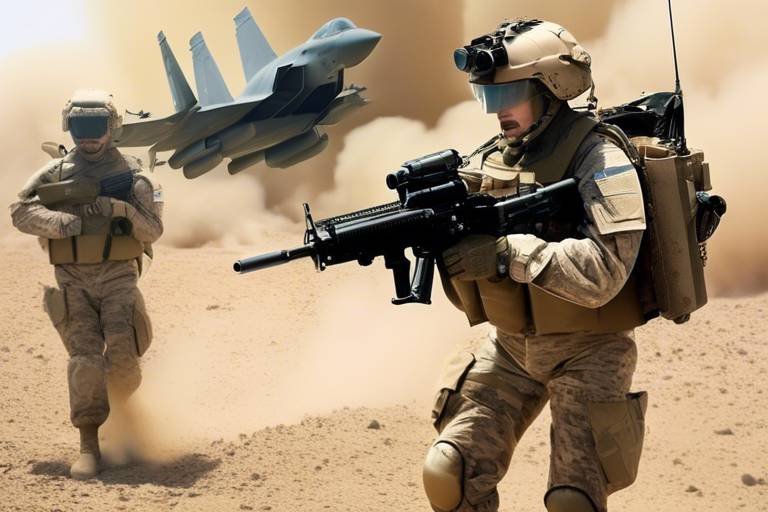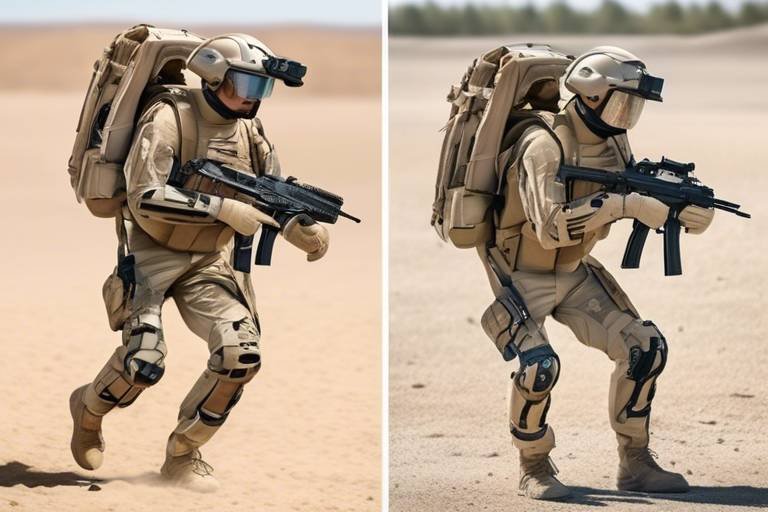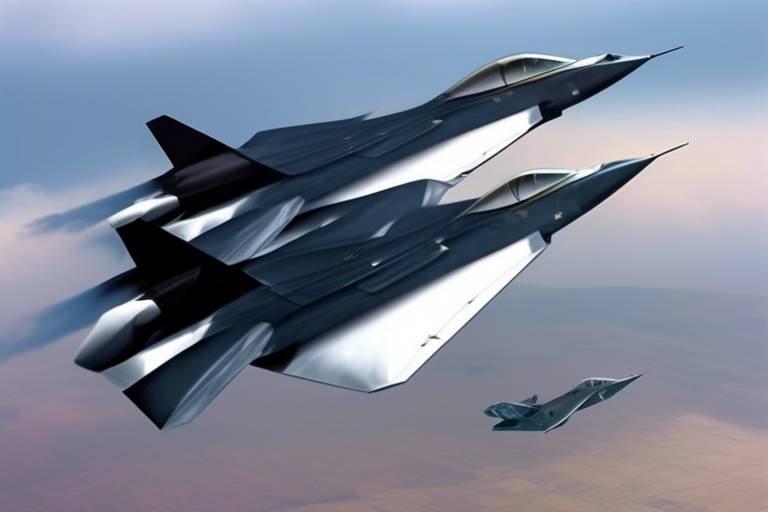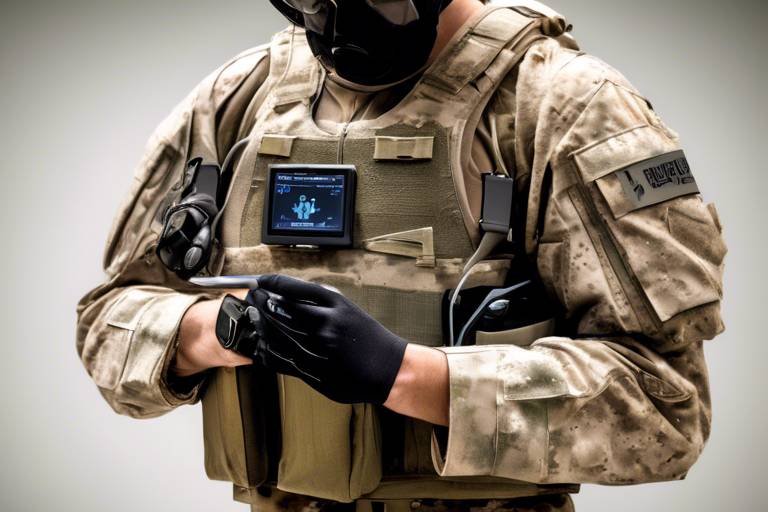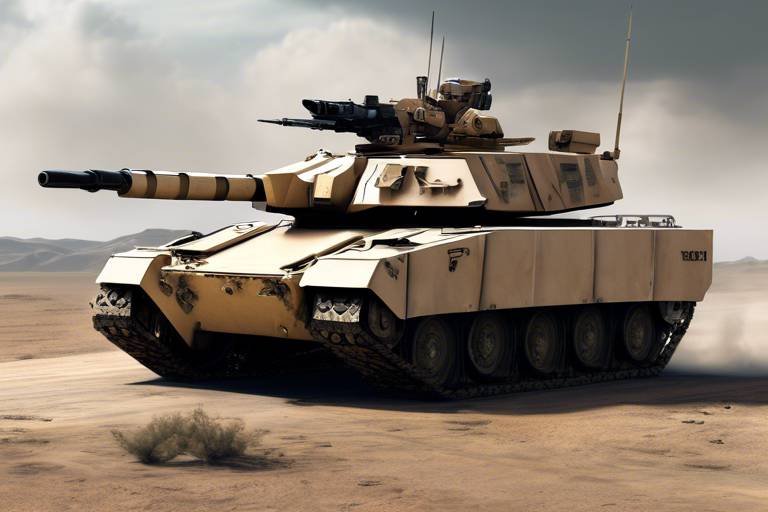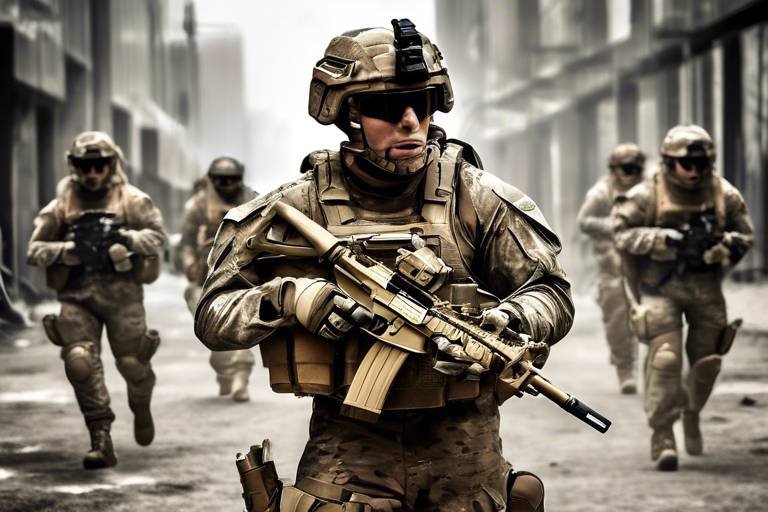Innovations in Military Technology for Future Combat
The landscape of warfare is undergoing a seismic shift, driven by cutting-edge advancements in military technology. As nations strive to maintain their edge in combat effectiveness, innovations are emerging that not only enhance operational capabilities but also redefine the very nature of warfare itself. From autonomous systems that operate without human intervention to artificial intelligence that augments decision-making processes, the future of military engagements promises to be both exciting and complex.
One of the most striking aspects of these innovations is the integration of autonomous combat systems. These systems, including unmanned aerial vehicles (UAVs) and ground robots, are designed to carry out missions with minimal human oversight. Imagine a battlefield where drones can scout enemy positions, gather intelligence, and even engage targets—all while their operators remain safely out of harm's way. This capability not only reduces risk to human life but also increases the speed and efficiency of military operations. However, it also raises important ethical questions about accountability and the potential for unintended consequences.
Moreover, the infusion of artificial intelligence (AI) into military strategies is another game-changer. AI can analyze vast amounts of data, providing commanders with insights that were previously unimaginable. For instance, predictive analytics can forecast enemy movements or assess the likelihood of mission success based on historical data. This shift towards data-driven decision-making allows for a more agile and responsive military force. However, it also necessitates a robust understanding of the limitations and biases inherent in AI systems, ensuring that human judgment remains integral to the decision-making process.
As we delve deeper into the capabilities of AI, we encounter the fascinating world of machine learning algorithms. These algorithms are not just buzzwords; they are at the forefront of enhancing operational efficiency. By continuously learning from new data, they enable real-time decision-making and predictive maintenance for military equipment. Imagine a scenario where a soldier's gear can self-diagnose issues before they become critical, ensuring that equipment is always mission-ready. This level of efficiency is crucial in high-stakes environments where every second counts.
In addition to AI, advanced simulation training technologies are revolutionizing how soldiers prepare for combat. Through realistic combat scenarios, simulations allow troops to practice their skills in a safe environment. This is akin to a pilot training in a flight simulator before taking to the skies. The ability to experience high-pressure situations without the associated risks enhances soldiers’ readiness and decision-making skills, ultimately leading to better outcomes in real combat situations.
Furthermore, the role of AI-driven logistics cannot be overlooked. These systems optimize supply chain management and resource allocation, ensuring that troops have the necessary support when they need it most. Imagine a military operation where supplies are automatically routed to the front lines based on real-time needs assessments, minimizing delays and maximizing operational effectiveness. This level of coordination is essential in modern warfare, where the speed of operations can determine success or failure.
As we explore these innovations, it is clear that the future of military technology is not just about enhancing weapons or systems; it’s about creating a cohesive, integrated approach to combat that leverages the best of human and machine capabilities. However, with these advancements come significant challenges, particularly in the realm of cyber warfare. As militaries become more reliant on technology, the threat of cyber attacks grows. Understanding the tools and techniques to defend against these threats is critical for maintaining operational security and effectiveness.
- What are autonomous combat systems?
Autonomous combat systems are unmanned vehicles and drones designed to perform military missions with minimal human intervention, improving efficiency and safety.
- How does artificial intelligence impact military strategies?
AI enhances decision-making processes by analyzing large datasets, providing insights into enemy movements, and improving operational readiness.
- What role do machine learning algorithms play in military operations?
Machine learning algorithms improve data analysis, allowing for real-time decision-making and predictive maintenance of military equipment.
- How do simulation technologies benefit soldier training?
Simulation technologies create realistic combat scenarios that enhance soldiers' readiness and decision-making skills in high-pressure environments.
- Why is AI-driven logistics important?
AI-driven logistics optimize supply chains, ensuring timely support and resource allocation for military operations, which is critical for success.

Autonomous Combat Systems
In the ever-evolving landscape of military technology, are emerging as game-changers. These systems, which include unmanned aerial vehicles (UAVs), ground robots, and naval vessels, are designed to operate with minimal human intervention. Imagine a battlefield where drones soar above, gathering real-time intelligence while ground robots engage in tactical maneuvers. This isn't science fiction; it's the future of warfare. By leveraging advanced sensors, artificial intelligence, and machine learning, these systems can make split-second decisions, dramatically enhancing operational effectiveness.
The capabilities of autonomous combat systems are vast. They can conduct reconnaissance missions, deliver payloads, and even carry out strikes with pinpoint accuracy. The advantages are clear: reduced risk to human life, increased operational reach, and the ability to operate in environments that are too dangerous for human soldiers. However, the rise of these technologies also brings forth a slew of ethical considerations. Questions arise about accountability in combat, the potential for unintended engagements, and the moral implications of machines making life-and-death decisions.
One of the most compelling aspects of autonomous systems is their ability to work in tandem with human operators. This human-machine collaboration can optimize mission outcomes. For instance, a human operator might oversee a swarm of drones, directing them to gather intelligence while simultaneously launching an attack on enemy positions. This synergy between humans and machines not only enhances effectiveness but also allows for innovative strategies that were previously unimaginable.
Moreover, the integration of these systems into military operations necessitates a rethinking of training and tactics. Soldiers will need to adapt to working alongside machines, understanding their capabilities and limitations. This shift in dynamics could lead to a new era of warfare where autonomous systems are not just tools but integral components of military strategy.
In summary, while autonomous combat systems present exciting opportunities for enhancing military operations, they also challenge us to consider the broader implications of their use. As we move forward, it will be crucial to balance technological advancements with ethical considerations to ensure that these innovations serve humanity's best interests.
- What are autonomous combat systems? Autonomous combat systems are military technologies that operate with minimal human intervention, such as drones and robotic ground vehicles.
- What are the advantages of using these systems in warfare? They reduce risk to human life, enhance operational reach, and can perform tasks in dangerous environments.
- What ethical concerns are associated with autonomous combat systems? Ethical concerns include accountability for decisions made by machines, potential unintended engagements, and the moral implications of automated warfare.
- How do autonomous systems collaborate with human operators? They can work together, allowing human operators to oversee multiple systems, optimizing mission outcomes through effective coordination.
- What changes will be necessary in military training due to autonomous combat systems? Training will need to focus on how soldiers can effectively work alongside machines, understanding their capabilities and limitations.

Artificial Intelligence in Warfare
Artificial Intelligence (AI) is not just a buzzword; it's a game-changer in the realm of military strategy and operations. Imagine a battlefield where machines can analyze vast amounts of data faster than any human could, making split-second decisions that could mean the difference between victory and defeat. This is the reality we are stepping into, thanks to AI's transformative capabilities.
One of the most exciting applications of AI in warfare is its ability to enhance predictive analytics. Military leaders can now leverage AI algorithms to forecast enemy movements, assess potential threats, and even predict the outcomes of various strategies before they are executed. This level of foresight allows for more informed decision-making, ultimately leading to greater operational effectiveness.
Moreover, AI is being integrated into autonomous decision-making systems. These systems can operate independently, analyzing real-time data and executing missions without direct human intervention. For instance, drones equipped with AI can identify targets, assess risks, and engage in combat scenarios, all while minimizing the need for human input. However, this raises significant ethical questions. Should machines have the authority to make life-and-death decisions? The debate is ongoing, and it’s crucial to address these concerns as we advance.
Another fascinating aspect of AI in warfare is its contribution to machine learning algorithms. These algorithms can sift through enormous datasets, learning from past engagements to improve future performance. For example, they can analyze patterns in enemy behavior, enhancing the military's ability to anticipate and counteract enemy strategies. This capability is instrumental in real-time decision-making, enabling troops to adapt quickly to changing combat conditions.
AI is also revolutionizing combat training through advanced simulation technologies. Picture a training environment where soldiers can engage in realistic combat scenarios, complete with AI-driven adversaries that adapt to their tactics. This immersive training experience not only enhances readiness but also sharpens decision-making skills in high-pressure situations. Soldiers can practice responding to various threats, honing their skills in a safe, controlled environment.
Logistics is the backbone of any military operation, and AI is optimizing this critical component. AI-driven logistics systems can analyze supply chain dynamics, ensuring that resources are allocated efficiently and effectively. For instance, these systems can predict when supplies will run low and automatically reorder essential materials, ensuring troops are always equipped and ready for action. This timely support is vital for maintaining operational readiness in combat scenarios.
As warfare evolves, so do the threats faced by military forces. Cyber warfare has emerged as a critical aspect of modern military strategy, and AI plays a pivotal role in both defending against cyber threats and conducting offensive operations. AI algorithms can monitor network traffic in real-time, identifying potential intrusions and responding faster than human operators could. This ability to adapt and react to cyber attacks is essential in protecting sensitive military data and infrastructure.
The integration of AI into military operations is not just about enhancing capabilities; it's about redefining the very nature of warfare. As we continue to explore the potential of AI, we must also engage in conversations about the ethical implications and the responsibilities that come with such powerful technologies. The future of combat is not just about advanced weaponry; it's about how we harness the power of AI to create a safer, more effective military.
- What role does AI play in modern warfare?
AI enhances decision-making, predictive analytics, and operational efficiency in military operations. - Are there ethical concerns regarding AI in warfare?
Yes, the use of AI in combat raises questions about accountability and the morality of machines making life-and-death decisions. - How does AI improve military training?
AI-driven simulations provide realistic training scenarios that help soldiers prepare for combat situations. - What impact does AI have on logistics in the military?
AI optimizes supply chain management, ensuring timely delivery of resources and enhancing operational readiness.

Machine Learning Algorithms
In the rapidly evolving landscape of military technology, are emerging as game-changers. These sophisticated algorithms analyze vast amounts of data, enabling military strategists to make informed decisions in real-time. Imagine being in a high-stakes game of chess where your opponent is constantly changing their strategy; machine learning acts as your secret weapon, predicting moves and countering threats before they materialize.
One of the most significant advantages of machine learning in military operations is its ability to enhance data analysis. Traditional methods of data processing often fall short, struggling to keep up with the sheer volume and complexity of information generated in modern warfare. However, machine learning algorithms excel in this environment, capable of identifying patterns and trends that might go unnoticed by human analysts. This capability allows for more accurate threat assessments and operational planning.
Moreover, machine learning algorithms play a crucial role in predictive maintenance for military equipment. By analyzing performance data from various systems, these algorithms can forecast potential failures before they occur. This proactive approach not only extends the lifespan of critical equipment but also ensures that troops have access to fully operational machinery when it matters most. For instance, consider a fighter jet that requires maintenance; machine learning can analyze its usage patterns and alert technicians to any parts that are likely to fail soon, preventing unexpected downtime during missions.
Furthermore, the integration of machine learning into military operations facilitates real-time decision-making. In combat situations, the ability to process information quickly and accurately can mean the difference between success and failure. Machine learning algorithms can sift through data from surveillance drones, ground sensors, and other sources to provide commanders with actionable insights. This means that instead of relying solely on intuition or past experience, military leaders can make decisions backed by data-driven evidence.
However, the implementation of machine learning in military contexts is not without its challenges. Ethical considerations arise when machines are given decision-making powers, especially in life-and-death situations. The question of accountability becomes paramount: if an autonomous system makes a mistake, who is responsible? As military organizations continue to explore the potential of machine learning, these ethical dilemmas must be addressed to ensure that technology is used responsibly and effectively.
In conclusion, machine learning algorithms represent a profound shift in how military operations are conducted. By enhancing data analysis, predictive maintenance, and real-time decision-making, these algorithms not only improve operational efficiency but also pave the way for a more strategic approach to combat. As we look to the future, it’s clear that embracing these innovations will be essential for maintaining a competitive edge in warfare.
- What are machine learning algorithms? Machine learning algorithms are computational methods that enable systems to learn from data and improve their performance over time without being explicitly programmed.
- How do machine learning algorithms benefit military operations? They enhance data analysis, predictive maintenance, and real-time decision-making, allowing for more informed and strategic military actions.
- What are the ethical concerns surrounding machine learning in the military? Ethical concerns include accountability for autonomous decisions and the potential for misuse of technology in combat situations.

Combat Simulation Training
In today's rapidly evolving battlefield, has emerged as a game-changer for military forces around the globe. Imagine being able to replicate the chaos and unpredictability of real combat situations without the actual risks involved. This innovative training method not only enhances soldiers' skills but also prepares them for high-pressure decision-making scenarios that they might face in real life. The integration of advanced technologies like virtual reality (VR) and augmented reality (AR) allows soldiers to engage in immersive training experiences that closely mimic the conditions of modern warfare.
One of the most significant advantages of combat simulation training is its ability to provide real-time feedback. This immediate analysis helps soldiers understand their strengths and weaknesses, enabling them to make necessary adjustments before stepping into the actual combat environment. Moreover, these simulations can be tailored to reflect specific mission objectives, terrains, and enemy tactics, making the training highly relevant and effective. For instance, a unit preparing for an urban combat mission can train in a simulated city environment, complete with realistic obstacles and scenarios that they are likely to encounter.
Furthermore, combat simulations foster teamwork and communication skills among soldiers. By participating in group exercises, they learn how to coordinate their actions, share critical information, and support one another under pressure, which is vital for operational success. The ability to practice these skills in a safe environment not only boosts confidence but also enhances the overall effectiveness of military operations.
To give you a better understanding of the impact and structure of combat simulation training, let's take a look at the following table:
| Key Features | Benefits |
|---|---|
| Realistic Scenarios | Enhances preparedness for actual combat situations. |
| Immediate Feedback | Allows for quick learning and adaptation. |
| Team Coordination | Improves communication and collaborative skills. |
| Cost-Effective | Reduces the need for live-fire exercises, saving resources. |
Moreover, the utilization of artificial intelligence in combat simulations is paving the way for even more advanced training methodologies. AI can create adaptive scenarios that change based on the soldiers' actions, providing a more dynamic and challenging training environment. This technology not only makes the training more engaging but also ensures that soldiers are continually tested and pushed to their limits.
As technology continues to advance, the future of combat simulation training looks promising. Innovations such as haptic feedback suits and AI-driven opponents will further enhance the realism of these training exercises. Soldiers will be able to experience the physical sensations of combat, such as recoil and environmental effects, making their training even more impactful. In conclusion, combat simulation training is not just a trend; it is a crucial component of modern military preparedness that equips soldiers with the skills and confidence they need to succeed in the field.
- What is combat simulation training? Combat simulation training involves using advanced technologies to create realistic training environments for soldiers, allowing them to practice combat scenarios without the risks associated with live training.
- How does simulation training improve soldier performance? It provides real-time feedback, enhances teamwork, and allows soldiers to practice in scenarios that closely mimic actual combat situations.
- Are there any costs associated with combat simulation training? While initial setup costs can be high, simulation training is generally more cost-effective than live-fire exercises in the long run.
- What technologies are used in combat simulation? Technologies such as virtual reality, augmented reality, and artificial intelligence are commonly used to create immersive training experiences.

AI-Driven Logistics
In the modern battlefield, the concept of logistics is evolving at a breakneck pace, thanks to the integration of artificial intelligence (AI). Gone are the days when supply chains operated on manual processes and rudimentary forecasting. Today, AI-driven logistics systems are at the forefront of military operations, ensuring that troops receive the supplies they need, exactly when they need them. Imagine a world where every bullet, ration, and piece of equipment is delivered with pinpoint accuracy—this is the reality that AI is helping to create.
AI enhances logistics in several key ways. First and foremost, it improves predictive analytics. By analyzing vast amounts of data, AI can forecast demand for supplies based on various factors, including troop movements, historical data, and even weather conditions. This predictive capability allows military planners to anticipate needs before they arise, reducing waste and ensuring optimal resource allocation. For instance, if a unit is expected to advance into a challenging terrain, AI can trigger the timely delivery of specialized gear and supplies to support that mission.
Moreover, AI-driven logistics systems streamline the supply chain by automating processes that were once labor-intensive and prone to human error. With AI, inventory management becomes a breeze. Systems can track supplies in real-time, alerting commanders when stocks are low or when reordering is necessary. This not only saves time but also enhances the overall efficiency of military operations. Consider a scenario where a battalion is engaged in a prolonged operation; AI can ensure that fuel, ammunition, and medical supplies are continuously replenished without any interruptions.
One of the most exciting aspects of AI logistics is its ability to optimize routes for deliveries. By evaluating multiple variables such as traffic patterns, enemy movements, and environmental conditions, AI can determine the safest and most efficient routes for supply convoys. This capability minimizes the risk of ambushes and ensures that critical supplies reach their destinations swiftly. In essence, AI acts as a strategic partner, enabling military forces to maintain operational momentum even in the most challenging circumstances.
However, the implementation of AI in logistics is not without its challenges. Security concerns are paramount, as the reliance on technology makes military supply chains vulnerable to cyber threats. As AI systems become more integrated, ensuring their cybersecurity becomes a critical aspect of military strategy. Additionally, ethical considerations surrounding AI decision-making processes in logistics must be addressed, ensuring that human oversight remains a priority.
In conclusion, AI-driven logistics is transforming how military operations are conducted. By enhancing predictive analytics, streamlining supply chains, and optimizing delivery routes, AI is ensuring that troops are well-equipped and prepared for any situation. As we look to the future, it is clear that the integration of AI into military logistics will continue to evolve, paving the way for more efficient and effective combat operations.
- What are AI-driven logistics? AI-driven logistics refer to the use of artificial intelligence technologies to improve supply chain management, inventory tracking, and resource allocation in military operations.
- How does AI enhance predictive analytics in logistics? AI analyzes large datasets to forecast supply needs based on various factors, allowing for proactive resource management and reducing waste.
- What are the security concerns associated with AI in logistics? The reliance on technology makes military supply chains vulnerable to cyber threats, necessitating robust cybersecurity measures.
- Can AI logistics systems operate without human oversight? While AI can automate many processes, human oversight is essential to ensure ethical decision-making and to respond to unexpected challenges.

Cyber Warfare Capabilities
In today's hyper-connected world, cyber warfare has emerged as a crucial element of military strategy. The battlefield is no longer confined to physical terrain; it now extends into the vast realms of cyberspace. This evolution has led to the development of sophisticated tools and techniques aimed at both offensive and defensive operations. Cyber warfare capabilities encompass a variety of tactics, ranging from espionage to disruption, and they play a vital role in national security. But what does this mean for the future of combat?
First and foremost, the need for robust cyber defense systems is paramount. Military organizations are investing heavily in protecting their networks from potential breaches that could compromise sensitive information or disrupt operational capabilities. These systems utilize advanced algorithms and machine learning to detect anomalies and respond to threats in real-time. Imagine a digital fortress that can adapt and evolve, much like a living organism, to fend off intrusions. This is the essence of modern cyber defense.
On the offensive side, cyber warfare allows military forces to conduct operations that can have a profound impact on enemy capabilities without the need for traditional weapons. For instance, consider the potential of a cyber attack to disable an adversary's communication systems or disrupt their supply chains. Such actions can create chaos, making it difficult for the enemy to respond effectively. The strategic implications are enormous, as these capabilities can shift the balance of power in a conflict.
Moreover, the integration of cyber capabilities into military operations requires a new breed of personnel—cyber warriors. These individuals possess unique skills in programming, network engineering, and digital forensics. They are akin to the knights of the digital age, equipped with the tools to protect their realm from unseen threats. Training programs are being developed to ensure that military personnel are not only proficient in traditional combat but also in the nuances of cyber warfare.
As we look to the future, it’s essential to recognize the ethical considerations surrounding cyber warfare. The ability to conduct operations from a distance raises questions about accountability and the potential for collateral damage. Unlike traditional warfare, where the impact is often visible and immediate, cyber operations can have delayed and unpredictable consequences. This ambiguity complicates the decision-making process for military leaders and policymakers.
To illustrate the growing significance of cyber warfare, consider the following table that outlines key capabilities and their implications:
| Capability | Description | Strategic Implications |
|---|---|---|
| Network Defense | Protecting military networks from unauthorized access and attacks. | Ensures operational integrity and protects sensitive information. |
| Offensive Cyber Operations | Disabling enemy systems through targeted cyber attacks. | Can disrupt enemy operations without physical confrontation. |
| Information Warfare | Manipulating information to influence public perception or enemy morale. | Can sway public opinion and destabilize enemy forces. |
In conclusion, the capabilities of cyber warfare are reshaping the landscape of military operations. As technology continues to advance, the importance of integrating cyber strategies into broader military tactics will only grow. The question remains: how will nations adapt to this new reality, and what measures will they take to ensure their security in the face of evolving cyber threats?
- What is cyber warfare? Cyber warfare refers to the use of digital attacks by one nation to disrupt the vital computer systems of another, often with the intent to cause damage or gain strategic advantages.
- How do military organizations defend against cyber threats? They utilize advanced cybersecurity measures, including firewalls, intrusion detection systems, and continuous monitoring to protect their networks.
- What are the ethical implications of cyber warfare? Ethical concerns include accountability for actions taken in cyberspace, the potential for collateral damage, and the impact on civilian populations.
- What skills are needed for a career in cyber warfare? Skills in programming, network security, digital forensics, and an understanding of military operations are crucial for success in this field.
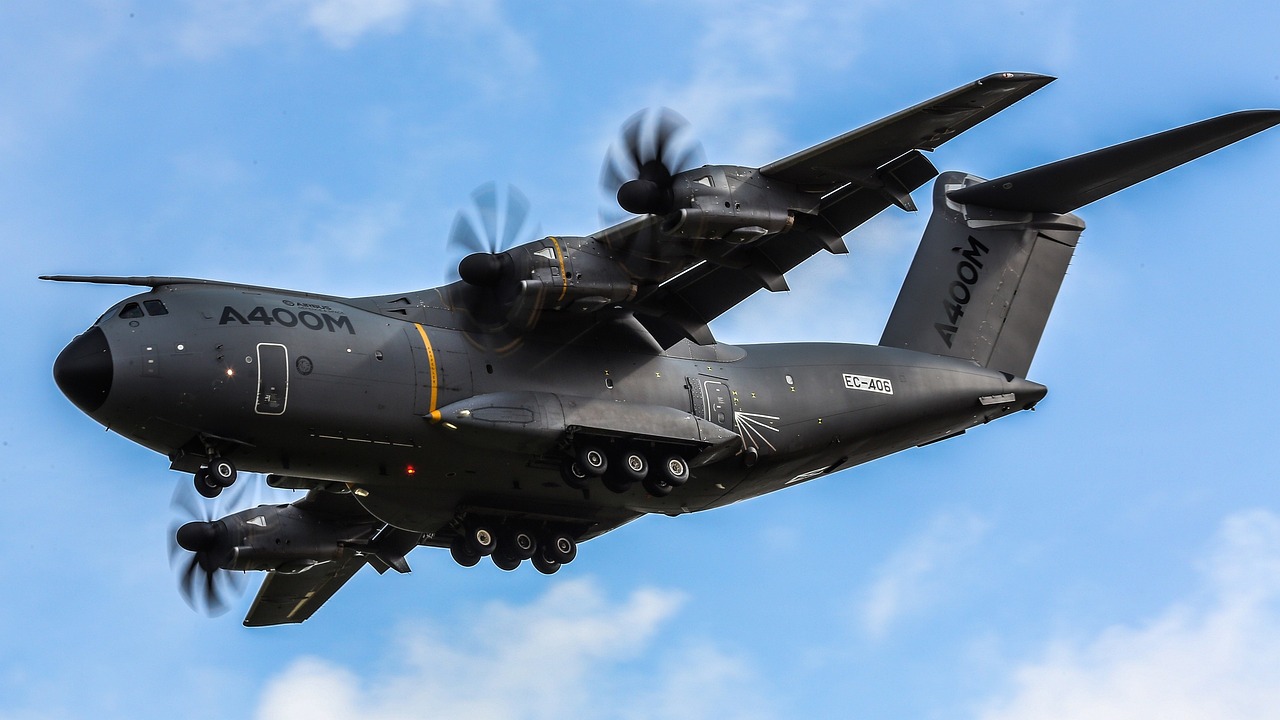
Next-Generation Weaponry
The landscape of modern warfare is undergoing a seismic shift, primarily driven by the development of . These advanced systems are not just about brute force; they incorporate cutting-edge technology that enhances lethality and precision on the battlefield. Imagine a scenario where a soldier can engage a target with pinpoint accuracy from miles away, or where a missile can evade all defenses. This is not science fiction; it's the reality of contemporary military innovations.
One of the most exciting advancements in this domain is the emergence of directed energy weapons. These systems utilize high-energy lasers and microwaves to disable or destroy targets with incredible speed and accuracy. Unlike traditional munitions, which rely on kinetic energy, directed energy weapons can engage multiple targets in quick succession, making them invaluable in fast-paced combat scenarios. For instance, a laser weapon system can neutralize incoming drones or missiles almost instantaneously, providing a robust defense against aerial threats.
In addition to directed energy, we are witnessing the rise of hypersonic missiles. These missiles can travel at speeds exceeding Mach 5, making them incredibly difficult to intercept. The strategic implications of hypersonic technology are profound. They can deliver payloads to targets within minutes, drastically reducing the response time of adversaries. This speed not only enhances offensive capabilities but also poses significant challenges for existing missile defense systems, which are often not equipped to handle such rapid threats.
To give you a clearer picture, here’s a comparison of traditional missile systems versus hypersonic missiles:
| Feature | Traditional Missiles | Hypersonic Missiles |
|---|---|---|
| Speed | Up to Mach 3 | Exceeds Mach 5 |
| Response Time | Minutes | Seconds |
| Defense Capability | More easily intercepted | Challenging to intercept |
| Launch Platforms | Land, sea, air | Land, sea, air |
Moreover, the integration of advanced targeting systems and artificial intelligence (AI) in next-generation weaponry is a game changer. These technologies enable real-time data processing and decision-making, allowing for adaptive targeting that can respond to dynamic battlefield conditions. Imagine a weapon that can learn from its environment and adjust its trajectory mid-flight to ensure maximum effectiveness. This level of sophistication not only increases the chances of mission success but also minimizes collateral damage, a critical consideration in modern warfare.
As we look toward the future, it’s essential to consider the ethical implications of these advancements. The ability to deploy weapons with such precision raises questions about accountability and the potential for misuse. How do we ensure that these powerful tools are used responsibly? This dialogue will be crucial as military organizations and governments navigate the complexities of next-generation warfare.
In conclusion, next-generation weaponry is set to redefine the rules of engagement on the battlefield. From directed energy systems to hypersonic missiles, these innovations promise to enhance military effectiveness significantly. As we continue to explore these technologies, the focus must also remain on ethical considerations, ensuring that advancements in warfare do not outpace our ability to govern them responsibly.
- What are directed energy weapons? Directed energy weapons are systems that use focused energy, such as lasers or microwaves, to damage or destroy targets.
- How do hypersonic missiles differ from traditional missiles? Hypersonic missiles travel at speeds greater than Mach 5, making them much faster and harder to intercept than traditional missiles.
- What role does AI play in next-generation weaponry? AI enhances targeting and decision-making processes, allowing for real-time adjustments during combat operations.
- Are there ethical concerns with next-generation weaponry? Yes, the precision and power of these weapons raise important questions about accountability and potential misuse.

Directed Energy Weapons
Directed energy weapons (DEWs) are a game-changer in modern warfare, harnessing the power of focused energy to engage targets with unprecedented precision and speed. Unlike traditional munitions that rely on explosive force, DEWs utilize lasers, microwaves, and other forms of energy to disable or destroy threats. Imagine a weapon that can strike faster than the blink of an eye, with no need for ammunition resupply—this is the promise of directed energy technology.
One of the most significant advantages of directed energy weapons is their cost-effectiveness. While the initial development and deployment of DEWs can be expensive, the operational costs are remarkably low. Each shot can cost mere pennies compared to the thousands or even millions required for conventional munitions. This economic edge not only allows for sustained engagement during conflicts but also enables military forces to allocate resources more efficiently.
Moreover, DEWs offer remarkable versatility on the battlefield. For instance, they can be used for a range of applications, from intercepting drones and missiles to disabling enemy sensors and vehicles. As the threat landscape evolves with the proliferation of unmanned aerial systems and advanced missiles, the ability to engage these threats at the speed of light becomes crucial. The table below outlines some key features of directed energy weapons:
| Feature | Description |
|---|---|
| Speed | Engagement in real-time, with no travel time for projectiles. |
| Precision | Highly accurate targeting minimizes collateral damage. |
| Cost | Low operational costs per engagement compared to traditional weapons. |
| Scalability | Can be deployed on various platforms, including ground vehicles, ships, and aircraft. |
However, the deployment of directed energy weapons is not without its challenges. One major concern is the effective range of these systems. While DEWs can theoretically engage targets at great distances, atmospheric conditions such as fog, rain, or dust can significantly diminish their effectiveness. Furthermore, there are ethical considerations surrounding the use of such precise and potentially lethal technology, raising questions about accountability and the implications of autonomous systems.
As military forces around the world continue to explore the capabilities of directed energy weapons, it is essential to address these challenges head-on. The development of DEWs is not just about creating new weapons; it’s about reshaping the very nature of combat. The future of warfare may well depend on how effectively we can integrate these technologies into our military strategies while ensuring adherence to ethical standards.
- What are directed energy weapons? Directed energy weapons are systems that use focused energy, such as lasers or microwaves, to engage targets.
- How do directed energy weapons differ from traditional weapons? Unlike traditional weapons that rely on explosive force, DEWs engage targets with energy, offering higher precision and lower operational costs.
- What are the advantages of using directed energy weapons? Advantages include speed, precision, cost-effectiveness, and versatility in various combat scenarios.
- Are there any limitations to directed energy weapons? Yes, limitations include effective range, susceptibility to atmospheric conditions, and ethical considerations regarding their use.

Hypersonic Missiles
Hypersonic missiles are not just a buzzword in military circles; they represent a revolutionary leap in missile technology, capable of traveling at speeds exceeding **Mach 5**. This means they can cover distances five times the speed of sound, making them incredibly difficult to detect and intercept. Imagine a missile that can reach its target in mere minutes, leaving little to no time for defensive systems to react. This speed advantage fundamentally changes the dynamics of modern warfare.
One of the most compelling aspects of hypersonic missiles is their maneuverability. Unlike traditional ballistic missiles that follow a predictable parabolic trajectory, hypersonic missiles can glide through the atmosphere, altering their path mid-flight. This agility complicates interception for enemy defense systems, which are often designed to track and respond to more predictable threats. As a result, hypersonic missiles pose a significant challenge to existing missile defense systems, which must be upgraded to counter this new class of weaponry.
The strategic implications of hypersonic technology are profound. Nations that successfully develop and deploy these missiles will gain a decisive edge in military conflicts. For instance, the ability to strike high-value targets with minimal warning can deter adversaries and alter the balance of power. Countries like the United States, Russia, and China are heavily investing in hypersonic research, with various prototypes already undergoing testing. The race for hypersonic dominance is not just about speed; it’s about strategic deterrence and military superiority.
However, the development of hypersonic missiles is not without its challenges. The technology required to achieve such speeds and maneuverability is complex and expensive. Furthermore, the implications for global security are significant. As nations strive to outpace each other in hypersonic capabilities, the risk of an arms race looms large. The potential for escalation in conflicts is a concern that military strategists and policymakers must address.
In summary, hypersonic missiles are set to redefine the landscape of modern warfare. Their combination of speed, maneuverability, and strategic significance presents both opportunities and challenges for military forces worldwide. As we look to the future, it’s clear that the development of this technology will be a key factor in shaping military strategies and global power dynamics.
- What are hypersonic missiles?
Hypersonic missiles are advanced weapon systems capable of traveling at speeds greater than Mach 5, making them significantly faster than conventional missiles. - How do hypersonic missiles differ from traditional missiles?
Unlike traditional ballistic missiles that follow a predictable trajectory, hypersonic missiles can maneuver in flight, making them harder to intercept. - What are the strategic implications of hypersonic missiles?
Their speed and maneuverability provide nations with a significant military advantage, potentially altering the balance of power and increasing the risk of an arms race. - Which countries are developing hypersonic technology?
Countries such as the United States, Russia, and China are heavily investing in the research and development of hypersonic missile technology.
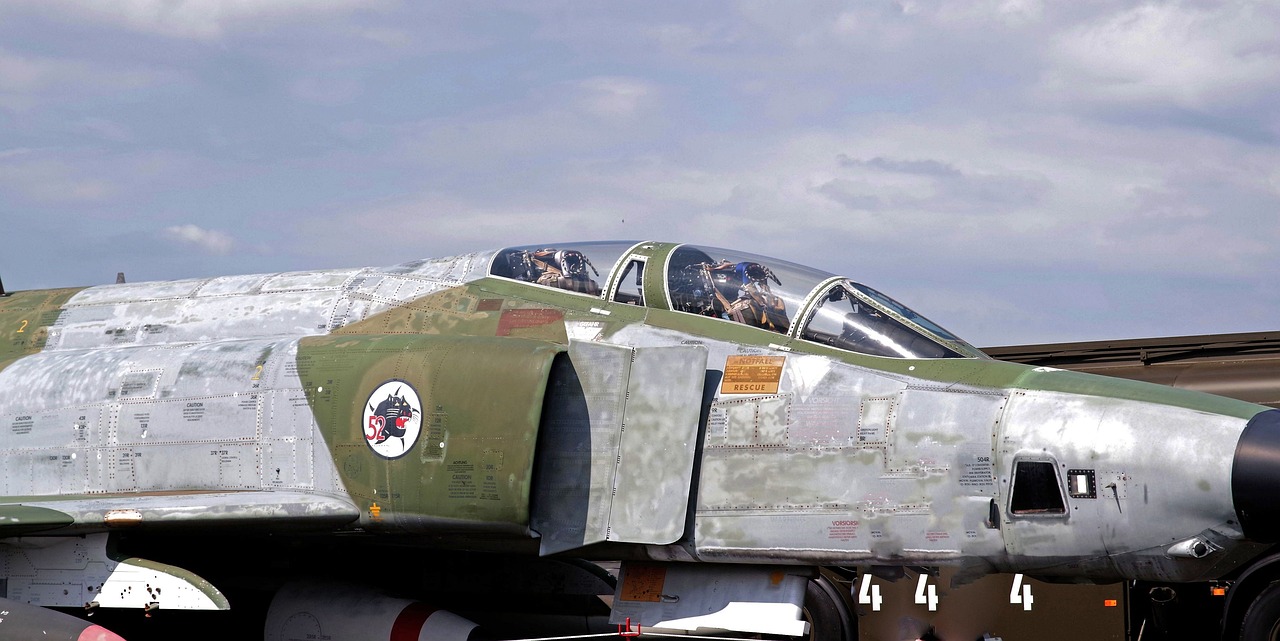
Enhanced Soldier Systems
In the ever-evolving landscape of modern warfare, are at the forefront of innovation, fundamentally changing the capabilities of individual troops. Imagine a soldier equipped with cutting-edge technology that not only amplifies their physical abilities but also provides them with critical information in real-time. This is not just a fantasy; it's becoming a reality through advancements in wearable technology, exoskeletons, and enhanced communication systems.
One of the most significant innovations is wearable technology, which includes devices that monitor a soldier's health and performance metrics. These gadgets can track heart rates, fatigue levels, and even stress indicators, allowing commanders to make informed decisions about a soldier's readiness for combat. For instance, if a soldier is nearing exhaustion, the system can alert the command center, enabling timely support or rotation with fresh troops. This real-time data not only enhances situational awareness but also contributes to better decision-making in high-pressure environments.
Moreover, the integration of exoskeletons is another groundbreaking advancement. These wearable robotic suits are designed to augment strength and endurance, enabling soldiers to carry heavier loads over longer distances without succumbing to fatigue. Imagine a soldier equipped with an exoskeleton that allows them to lift equipment that would normally require multiple personnel. This not only increases operational effectiveness but also minimizes the risk of injury, ensuring troops can perform at their best, even in the most challenging conditions.
In addition to these technologies, enhanced communication systems play a crucial role in modern combat scenarios. These systems ensure that soldiers remain connected with their units and command centers, providing them with vital information on enemy positions, mission updates, and tactical adjustments. For example, advanced communication devices can utilize secure networks to share data instantly, allowing for coordinated attacks and strategic maneuvers. The synergy of these technologies creates a more cohesive and responsive fighting force, capable of adapting to rapidly changing battlefield dynamics.
As we delve deeper into these innovations, it's essential to consider the potential implications for future military engagements. Enhanced soldier systems not only improve individual performance but also redefine the concept of teamwork in combat. With soldiers equipped with real-time data and augmented capabilities, the traditional hierarchy of command may evolve into a more fluid structure, where decisions are made collaboratively on the ground.
However, with great power comes great responsibility. The ethical considerations surrounding these enhancements cannot be overlooked. Questions about the implications of using such advanced technology in warfare, the potential for dehumanization of combat, and the risks of reliance on tech must be addressed. As we embrace these innovations, it is crucial to ensure that they are used to empower soldiers, not to diminish their humanity.
In conclusion, enhanced soldier systems represent a remarkable leap forward in military technology. By integrating wearable tech, exoskeletons, and advanced communication systems, we are not just enhancing the capabilities of individual troops but also revolutionizing the very nature of combat. The future of warfare is here, and it is more dynamic and complex than ever before.
- What are enhanced soldier systems? Enhanced soldier systems refer to advanced technologies that improve the capabilities of individual soldiers, including wearable technology, exoskeletons, and communication systems.
- How do wearable technologies benefit soldiers? Wearable technologies provide real-time health monitoring and performance data, enhancing situational awareness and decision-making in combat scenarios.
- What role do exoskeletons play in modern warfare? Exoskeletons augment a soldier's strength and endurance, allowing them to carry heavier loads and reduce fatigue, thereby improving operational effectiveness.
- Are there ethical concerns regarding enhanced soldier systems? Yes, ethical considerations include the potential dehumanization of combat and the risks associated with reliance on advanced technology in warfare.
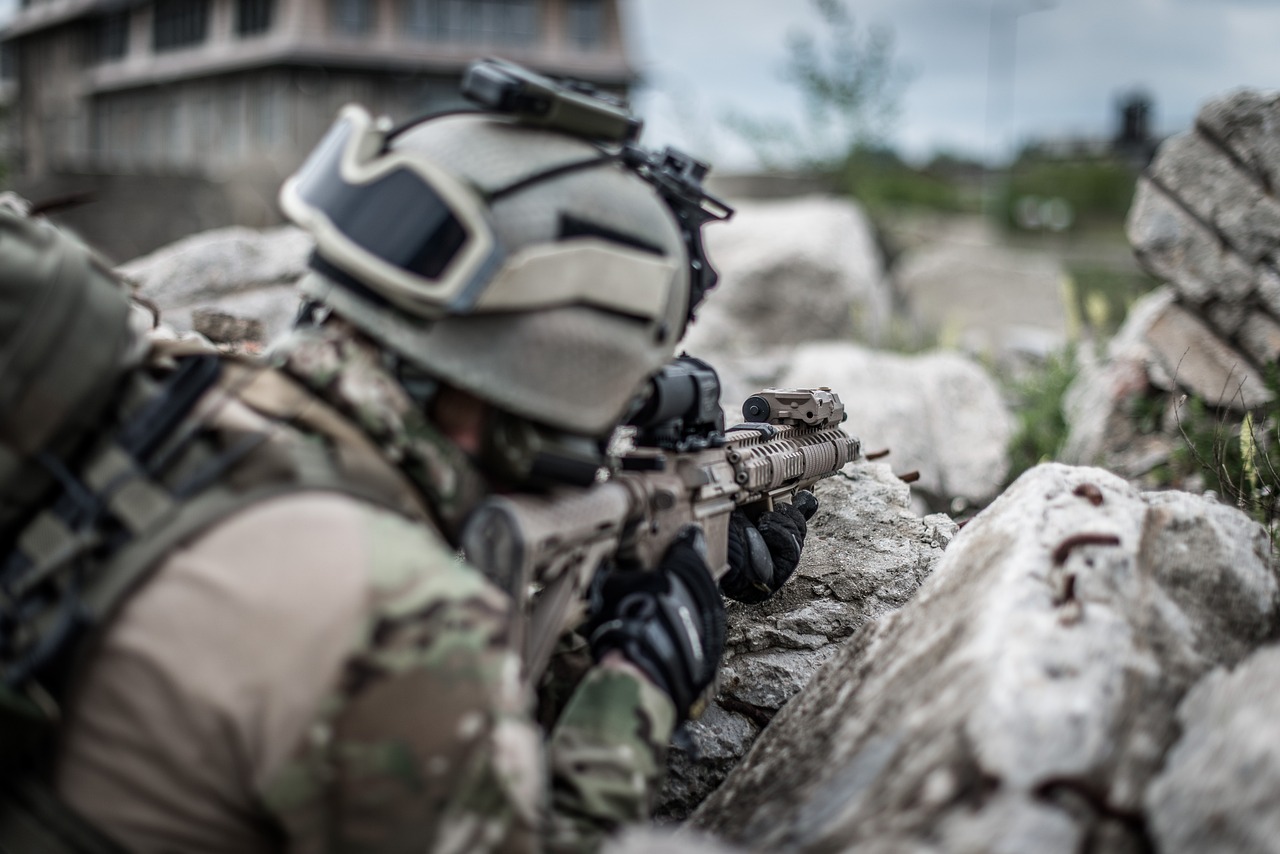
Wearable Technology
In the rapidly evolving landscape of military technology, stands out as a game-changer for soldiers on the battlefield. Imagine a world where each soldier is equipped with devices that not only track their health metrics but also provide real-time data about their environment. This is not science fiction; it's the reality of today’s military innovations. Wearable tech encompasses a variety of gadgets such as smart helmets, health-monitoring sensors, and augmented reality glasses, all designed to enhance situational awareness and operational effectiveness.
One of the most significant benefits of wearable technology is its ability to improve situational awareness. For instance, smart helmets can display vital information directly in the soldier's line of sight, allowing them to remain focused on their surroundings while accessing crucial data. This kind of integration is vital in high-stress environments where every second counts. Furthermore, health-monitoring sensors can track vital signs like heart rate and body temperature, alerting medics and commanders to potential health issues before they escalate, thereby saving lives.
Moreover, wearable devices can facilitate communication among troops. Imagine a scenario where soldiers can share information instantly through their wearable tech, creating a seamless flow of intelligence on the battlefield. This interconnectedness can lead to better coordination during operations, ultimately enhancing mission success rates. In addition, the data collected from these devices can be analyzed to improve training programs, ensuring that soldiers are better prepared for the challenges they may face.
However, with all these advantages come certain challenges. The integration of technology into military operations raises questions about security and privacy. How do we ensure that sensitive information is protected from enemy interception? What measures are in place to prevent hacking of wearable devices? These are critical considerations that military leaders must address as they implement these advanced technologies.
To give you a clearer picture of how wearable technology is shaping the future of combat, consider the following table summarizing key features and benefits:
| Device | Key Features | Benefits |
|---|---|---|
| Smart Helmet | Heads-up display, communication systems | Enhanced situational awareness, real-time data access |
| Health Monitoring Sensors | Heart rate, temperature monitoring | Early health issue detection, improved medical response |
| Augmented Reality Glasses | Overlay of tactical information | Improved decision-making, better mission planning |
In conclusion, wearable technology is not just an accessory for soldiers; it is becoming a vital component of modern warfare. By enhancing situational awareness, facilitating communication, and monitoring health, these devices empower troops to perform at their best under extreme conditions. As we look to the future, the integration of such technologies will undoubtedly lead to a more effective and responsive military force.
- What types of wearable technology are currently used in the military?
Wearable technology in the military includes smart helmets, health-monitoring devices, and augmented reality glasses, all designed to enhance soldier performance. - How does wearable technology improve soldier safety?
By monitoring vital signs and providing real-time data, wearable technology enables quick medical responses and enhances situational awareness, reducing risks on the battlefield. - Are there any security concerns with wearable technology?
Yes, the integration of technology raises concerns about data security and privacy, which military leaders must address to protect sensitive information.

Exoskeletons for Combat
Exoskeletons are truly a game changer in the realm of military technology, acting as a bridge between human capability and mechanical enhancement. Imagine a soldier equipped with a suit that amplifies their strength, endurance, and agility—this is not science fiction; it's becoming a reality. These advanced wearable systems are designed to support soldiers in various ways, enabling them to carry heavier loads over longer distances without succumbing to fatigue. Just picture a soldier on a grueling mission, burdened with gear that weighs more than they do. Now, with an exoskeleton, that same soldier can move effortlessly, as if the weight has been lifted off their shoulders.
One of the standout features of exoskeletons is their ability to assist in lifting and carrying heavy equipment. This not only reduces the physical strain on soldiers but also enhances their operational effectiveness. For instance, in a combat zone, every second counts. A soldier equipped with an exoskeleton can quickly maneuver through obstacles while carrying essential gear, giving them a significant edge over adversaries. The technology employs sensors and motors that respond to the wearer's movements, allowing for seamless integration and improved mobility.
Moreover, exoskeletons can be tailored for specific missions and environments. For example, some designs focus on enhancing leg strength for rapid movement, while others might prioritize upper body strength for tasks like loading supplies or operating heavy machinery. This adaptability ensures that soldiers are not just equipped but are optimized for the challenges they face. As military operations become more complex, the need for versatile solutions like exoskeletons becomes ever more apparent.
However, the integration of exoskeletons into military operations isn't without its challenges. The technology must be rugged enough to withstand harsh environments and reliable enough to function without failure in critical situations. Additionally, there are concerns regarding the cost and maintenance of these systems. As with any new technology, the military must weigh the benefits against the potential drawbacks. Nevertheless, as research and development continue, we can expect improvements that will address these concerns.
In summary, exoskeletons represent a significant leap forward in enhancing soldier capabilities. By augmenting physical strength and endurance, these systems not only improve individual performance but also enhance overall mission success. The future of combat may very well depend on how effectively we can integrate such innovations into our armed forces.
- What are exoskeletons, and how do they work?
Exoskeletons are wearable robotic systems that enhance the physical capabilities of the user. They use sensors and motors to amplify movement, allowing soldiers to carry heavier loads and move more efficiently. - What are the benefits of using exoskeletons in combat?
Exoskeletons reduce fatigue, enhance strength, and improve mobility, allowing soldiers to perform better in challenging environments and carry essential gear more easily. - Are there any challenges associated with exoskeleton technology?
Yes, challenges include ensuring durability in harsh conditions, the cost of development and maintenance, and the need for reliable performance in critical situations. - How are exoskeletons tailored for specific military missions?
Exoskeletons can be designed to focus on either upper or lower body strength, depending on the mission requirements, such as rapid movement or heavy lifting.
Frequently Asked Questions
- What are autonomous combat systems and how do they work?
Autonomous combat systems are advanced technologies that allow unmanned vehicles and drones to carry out missions with little to no human oversight. These systems utilize a combination of sensors, AI, and machine learning to navigate and make decisions in real-time, making them invaluable in modern warfare.
- How is artificial intelligence changing military strategies?
Artificial intelligence is revolutionizing military strategies by enhancing decision-making processes through predictive analytics and autonomous operations. AI can analyze vast amounts of data quickly, allowing military leaders to make informed decisions faster and more effectively than ever before.
- What role do machine learning algorithms play in military operations?
Machine learning algorithms are crucial for improving data analysis and operational efficiency in military settings. They help in real-time decision-making and predictive maintenance, ensuring that equipment is always in optimal condition and ready for action.
- How do combat simulation technologies benefit military training?
Combat simulation technologies create realistic training environments that prepare soldiers for high-pressure scenarios. These simulations enhance soldiers' readiness by allowing them to practice decision-making and tactical skills without the risks associated with live training.
- What is the significance of AI-driven logistics in military operations?
AI-driven logistics systems are essential for optimizing supply chains and resource allocation in military operations. They ensure that troops receive timely support and that resources are used efficiently, which is critical for maintaining operational readiness.
- What are the main threats associated with cyber warfare?
Cyber warfare poses significant threats to national security, including data breaches, disruption of critical infrastructure, and espionage. Militaries are developing advanced tools and techniques to defend against these threats and conduct offensive operations when necessary.
- What advancements are being made in next-generation weaponry?
Next-generation weaponry includes innovations such as directed energy weapons and hypersonic missiles. These technologies enhance lethality and precision on the battlefield, providing military forces with a strategic advantage over traditional weapon systems.
- How do directed energy weapons operate?
Directed energy weapons, like lasers and microwaves, operate by delivering energy directly to a target, which can disable or destroy it without traditional explosive munitions. This approach offers advantages like reduced collateral damage and lower operational costs.
- What are the implications of hypersonic missiles?
Hypersonic missiles, capable of traveling at speeds greater than Mach 5, represent a significant advancement in missile technology. Their speed and maneuverability make them difficult to detect and intercept, posing new challenges for defense systems worldwide.
- What innovations are being made in soldier systems?
Innovations in soldier systems include the development of wearable technology, exoskeletons, and enhanced communication devices. These advancements aim to improve soldiers' situational awareness, physical capabilities, and overall operational effectiveness in challenging environments.
- How does wearable technology benefit soldiers in combat?
Wearable technology provides soldiers with real-time data and health monitoring, enhancing situational awareness and decision-making. This technology allows troops to stay connected and informed, which is crucial in dynamic combat situations.
- What are exoskeletons and how do they help soldiers?
Exoskeletons are wearable robotic systems designed to enhance a soldier's strength and endurance. By reducing fatigue and improving operational effectiveness, exoskeletons allow soldiers to carry heavier loads and perform better in demanding conditions.

